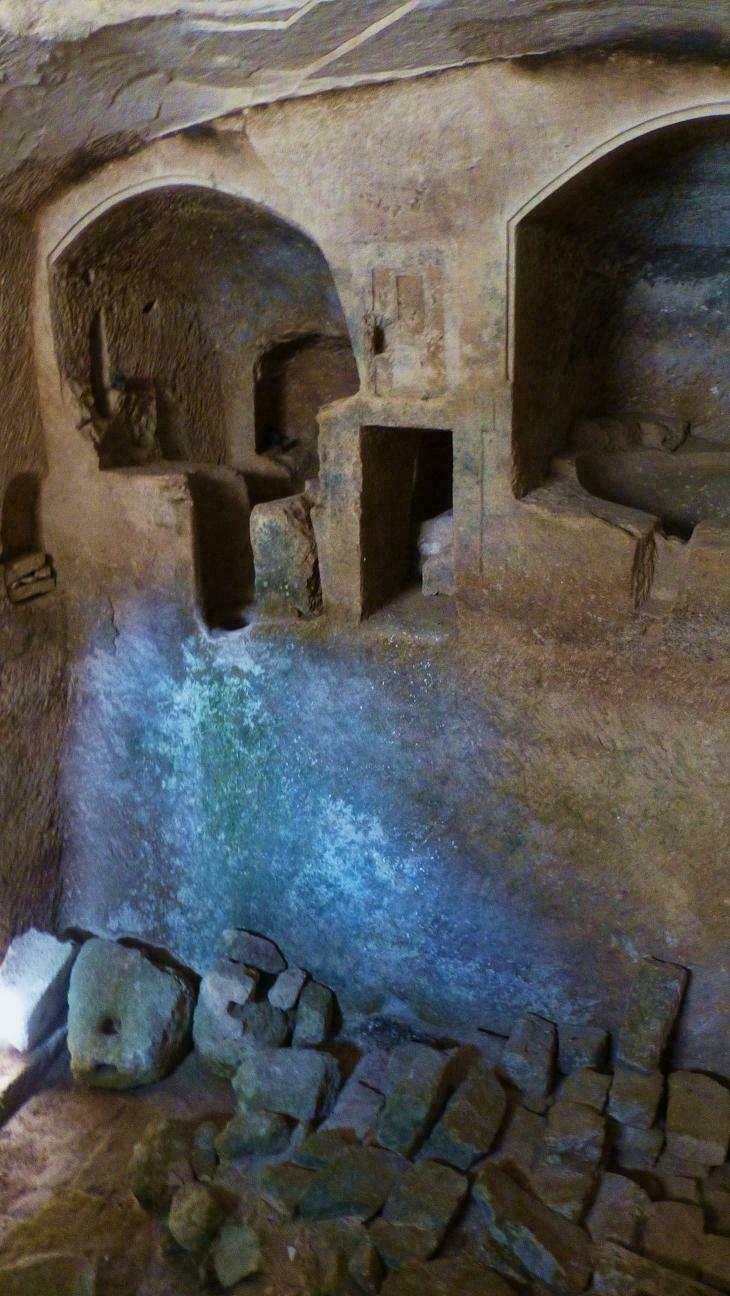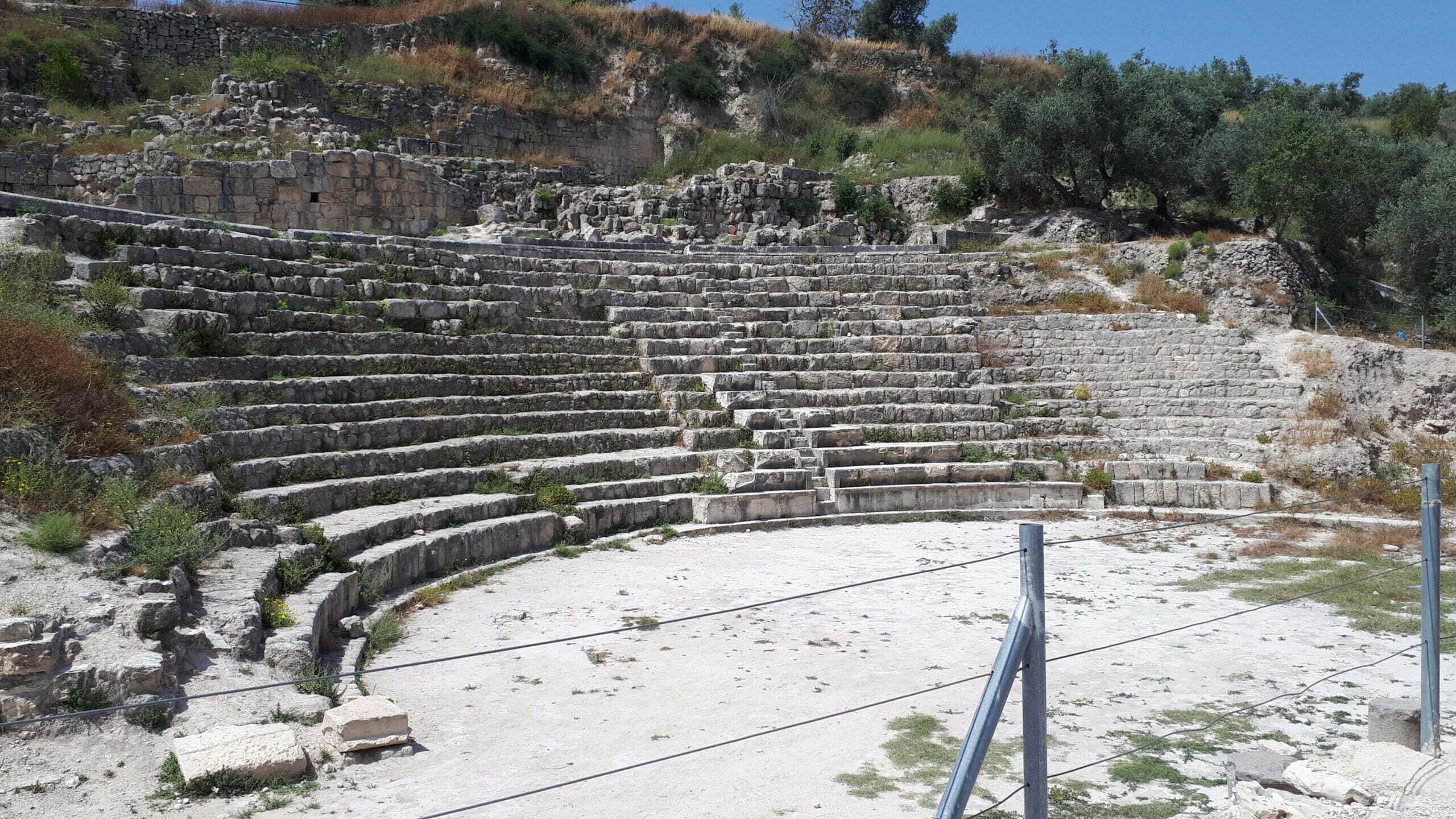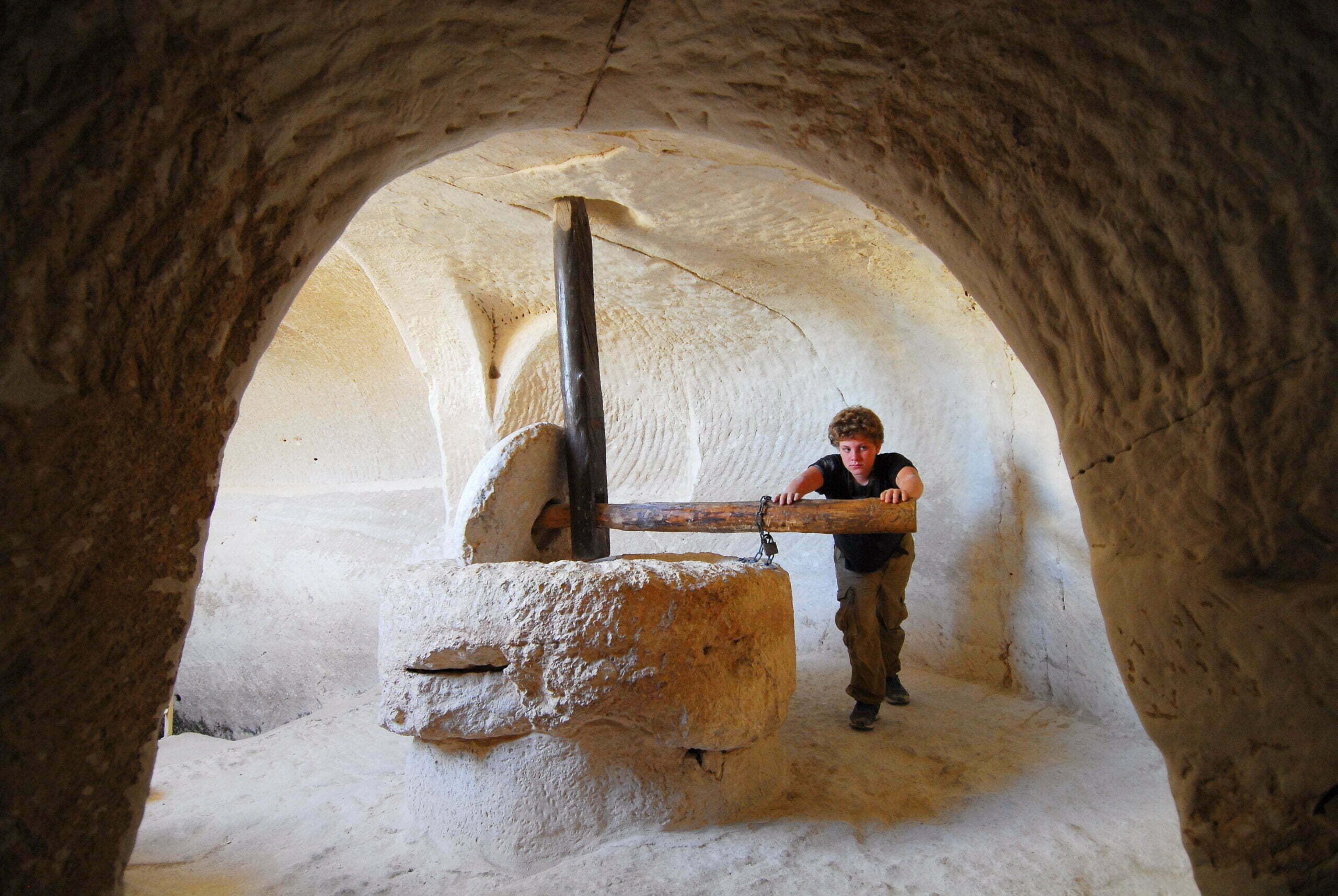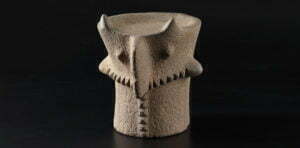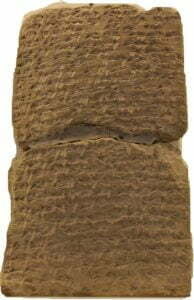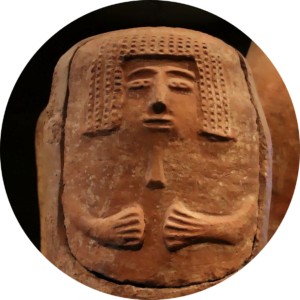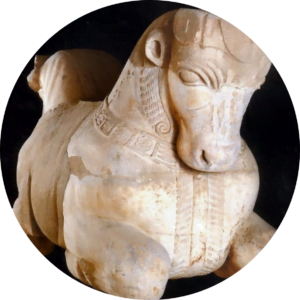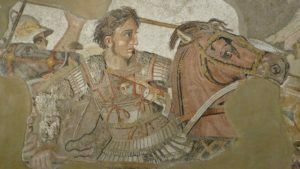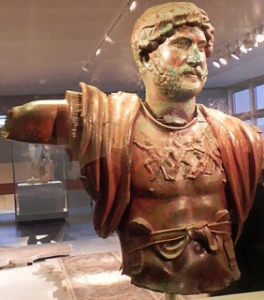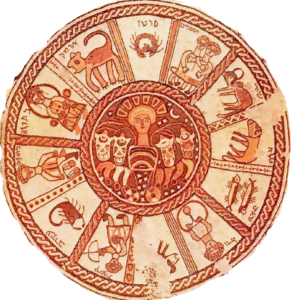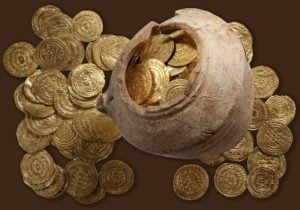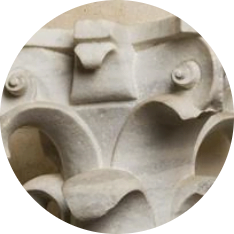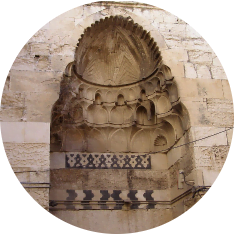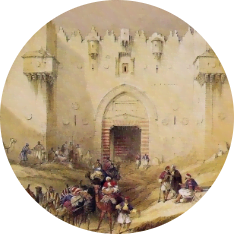The place of historiography in understanding the Hellenistic period in the Land of Israel
The term ‘Hellenism’ has already appeared in the II Book of Maccabees 4:13, in a quote from Jason of Cyrene, who lamented the inhabitants of Jerusalem that they imitate the Greek culture, which he calls ‘Hellenic’.
In modern Hebrew, the term ‘Greekness’ means the rate of absorption of Greek cultural patterns among local population groups, that is, the level of adoption of material and cultural Greek elements.
Most of the ancient historical sources discussing Alexander the Great’s conquests in the East were composed hundreds of years after the events, although they actually relied on historical accounts that were contemporary to Alexander and his successors. The same sources say that after the defeat of the Persians (Medien Empire) at the Battle of Issus (333 BC), Alexander succeeded in conquering Syria and the Land of Israel and thus preventing his enemies from threatening his army from the sea. Most coastal cities surrendered to it (probably without resistance) except for Tire – on which its army held a siege for seven months – and Gaza – on which it they held a siege for two months – in 332 BC. At the same time, the inner parts of the country were occupied.
During the wars between the successors of Alexander the Great (Wars of the Diadochi), the Land of Israel became a battlefield between Syria and Egypt. The historical period between the death of Alexander (323 BCE) and the Battle of Ipsus (301), indicates that the twenty-two years of the Diadochi Wars in the Land of Israel was a very turbulent period. However, this testimony is not strengthen by the archaeological findings: the destruction of Acre, Jaffa, Samaria and Gaza by Ptolemy in 312/11 BCE, while fleeing Egypt, has not yet been identified by archaeologists.
The architectural remains and the status of the Polis in the East
Urban architecture and its origins
In most urban centers in the Land of Israel in the Hellenistic period, traditions of urban construction from previous periods have been preserved and the remains of ancient settlements have been used. In many of these centers, new fortification systems were built during the Hellenistic period (such as Akko/Ptolemais, Yodefat/Iotapata, Sussita/Hippos, Dor/Dora, Samaria, Mount Gerizim, Jaffa/Iope and Maresha/Marisa), while in others (Shechem, Gezer/Gazera, Gaza [?] and Tel ‘Ira) the ancient fortifications were renovated. It turns out that most of the fortification construction methods unearthed from that period are not new, and can be seen as a continuation of ancient traditions.
Of the few surviving gate complexes there are gatehouses in an ancient “biblical” tradition (such as the gates on Mount Gerizim, at least some of which were erected during this period, or the gate in Gezer, which is a gate from the Iron Age that was renovated). There are also direct entrance openings that are protected by watch towers on one side (such as the one in Dor), in which a local building tradition can also be seen, as they are similar to fortress openings from the Iron Age and the Persian period.
It is difficult to see the round towers that were exposed in Akko and Samaria as evidence of the planning of fortification by a foreign entity, since they are no different from round or semi-oval towers that existed in the Land of Israel from the Early Bronze Age onwards. However, they may have been intended to address artillery introduced during the Hellenistic period, but the small number of examples from this period tipped the scales in favor of the environmental (topographic) and economic (construction cost) explanation in their preference.
The aqueduct in Akko, the only aqueduct dated in the Land of Israel to the Hellenistic period, does not make it possible to establish a significant Hellenistic heritage, since similar hewn waterworks are known in the Land of Israel since earlier periods – mainly from the Iron Age.
The few cult structures that have survived from the Hellenistic period prove that it was the local building traditions that ruled, and it is possible that the same was true of the deity worshiped at those sites.
Of the few examples of surviving mansions, the representative of which was uncovered at Tel Anafa. But it is also worth mentioning Qasr al-Abd in ‘Iraq al-Amir- in Trans Jordan. Greek influences are evident in these two complexes, but they are mainly limited to the architectural decoration of certain parts of them, while in their basic construction they involve local and foreign traditions, similar to buildings of their kind found throughout the Hellenistic East.
One of the main cultural characteristics of the Hellenistic period was the establishment of state-cities (poleis) which in the context of the Land of Israel was expressed in a new status for an existing city that adopted a Greek constitution and usually also a new name that could indicate a process of social Hellenism – that is, municipal institutions were established, such as a council (boule) and clergy appointed by the people. Such foundations, i.e. the granting of a new status / name to an existing city, are known, for example, in the days of Ptolemy II (especially in his 25th year – 260/261 BC) or intermittently in the days of Antiochus IV, in the 60s year of the 2nd century BCE, because the government was apparently interested in giving the cities (which often served as logistical bases to the army) full control over the surrounding villages. Some of those cities bought the Polis rights in full price, especially under Seleucid rule in view of its dire economic situation.
Archaeological data from local cities in the Hellenistic period do not show remains of public buildings with a Greek building tradition such as agora, basilica, or administrative buildings (bouleuterion), education (gymnasium) and entertainment (theater). The meaning of the term Polis in Jewish or other sources from this period was usually of a fortified settlement and not necessarily of an urban and political framework.
Military architecture and its origins
In addition to the fortifications of the urban centers discussed above, three types of buildings stand out during this period, which were used for defense purposes: citadels, fortresses and forts, whose architectural concept is traditional and well-known from previous periods. There was probably a difference between the roles of those structures; the citadels were probably used as the seat of the regional headquarters, while the fortresses and forts – for deterrence, tax collection, supervision and protection, as well as for providing ongoing security. From the examination of their construction methods, it is difficult to see in their planning a state initiative, since they do not have uniformity in dimensions, construction standard, wall thickness, internal division, etc. It is possible that the use of citadels for administrative purposes is the reason for the lack of public buildings in cities.
The place of the courtyard houses in the architecture of the Land of Israel
The dominant structure in the Hellenistic period was the courtyard house, which can be traced back to its roots and components in the Land of Israel from very ancient times. This format was used in administration and cult buildings, in mansions, in private houses (urban and rural), in citadels and fortresses.
The architectural decoration
One area in which Greek influence stands out is architectural decoration, which follows the three accepted styles in classical architecture: Doric, Ionian and Corinthian. Such architectural items were discovered in a small number of sites and came into use in the Land of Israel during the Hellenistic period (both Ptolemaic and Seleucid), which was relatively poor in such items. The few found do not indicate a clear preference for one style over the other (except perhaps in Dor, where the Doric style was preferred, but the amount of finds is quite small). The items were carved in local stone that usually originated in the vicinity of the site, a fact that proves that it was local art, and that the few finds that were discovered reflected provincial artistic trends. Other decorative arts that were found to have a foreign influence are the art of mosaics as well as wall-decorated plaster (stucco), as well as wall paintings (fresco).
The mosaics found in the Land of Israel from this period are also very few: they were documented only in Tel Anafa and Dor, dating to the late 2nd century BCE. Similar to the architectural decoration, originating in the west – but unlike it, it seems that the mosaic work was done by foreign artists. In Tel Anafa, although the mosaic is simple, but it is part of a bathhouse that may have a Phoenician design; in Tel Dor the mosaic is more complex and has stylistic parallels to sites in Greece and Italy. Unlike the mosaics, the origins of Stucco is in the East, in Persia and Mesopotamia. Architectural Stucco decorations typical of Hellenistic sites throughout the Mediterranean basin, blend an Eastern decoration tradition with a Western architectural tradition. It is not inconceivable that the walls of private houses and public buildings in the Land of Israel during this period, which contained painted Stucco of ashlars, reflect local development (such as in Akko, Beth She’an/Nysa-Scythopolis, Beth Yerah/Philoteria and more). Other wall paintings were documented in the so-called Sidonian tombs I and II at Maresha/Marisa.
Burial
The tombs in the Hellenistic period are divided into several types: burial in jars, pit burials, cist buriald, burial mounds (tumuli), shaft tombs, simple and complex loculi tombs, artificial and natural burial caves and burial structures (mausolea). Some of these types are typical of different geographical areas. Among the tombs there are individual tombs that glorify the status of the individual and there are family tombs where the family is at the center. Most of the buried were laid to rest on an east-west axis. The burial offerings were placed usually next to the buried, the most common of which were pottery vessels that were used to prepare and serve food as well as storage vessels. Among the offerings were also metal objects, jewelry and objects made of other materials, but these are more rare.
Art for worship purposes
The main find of figurative art form is figurines and statuettes made of clay and stone, an art that is fundamentally small, continuing the trends that characterized the Bronze and Iron Ages. It is difficult to identify in the figurines and statuettes local deities of worship. The Greek deities that can be identified by their characteristic symbols (attributs) incorporated local symbols as well. Thus local deities were identified with certainty with their Greek counterparts from that period, and through them the status of local worship among the Greek rulers of the land can be ascertained. From this it appears that religious-ritual pluralism was common among some of the ethnic groups of the country.
The everyday artifacts
When it comes to examining the artifacts used in everyday life in the Hellenistic period (made of clay, glass, stone, faience, metal, bone and wood) it is difficult to distinguish between finds originating in the Ptolemaic period and those from the Seleucid period. When examining the pottery at sites where a sequence of strata from these periods was exposed (Tel Anafa, Dor, Shechem, Tel Michal and Gezer), it turns out that there are only a few types of vessels in which typological and chronological development can be seen between the periods. It turns out, therefore, that alongside the production traditions of the various finds, which originated in earlier periods, new types appeared in the Hellenistic period that set it apart. These are especially evident in certain types of pottery and glass vessels, where the use of molds in industrial production consolidated in the second century BCE. Most pottery inspired by the Greek world is actually known in the Land of Israel as early as the Persian period, so the partial adoption of a foreign ceramic culture was not large and certainly not one-way, though significant.
The epigraphic finds
Evidence for the Greek administration appears in the epigraphic finds: coins, lead weights, bullae, stamps (and their imprints), ostraca and papyrus.
The coins are divided between a royal coins bearing the king’s portrait, and autonomous urban issues – coins that do not bear the king’s portrait, whose iconographic motifs reflect the material culture, religious and artistic influence of the populations that minted them. The autonomous coins, are known in the Land of Israel as early as the Persian period and continued to be minted during the Hellenistic period, though not continuously, as happened in most ancient city coins.
Most of the bullae found from this period were discovered in an archive that was uncovered in Tel Kadesh (over 2,000 in number), along with a few dozens from Beth She’’an/Nysa-Scythopolis. A minority of them are administrative in character, bearing inscriptions, in which there is often a Semitic, Phoenician or Greek artistic influence, while most of them are private (non-epigraphic) whose predominantly style is Greek. The use of bullae is not special to the Hellenistic period and it dates back to earlier periods, sometimes in a similar artistic style.
Continuity from previous periods also exists in the use of Phoenician- and Aramaic-script seal impressions that appear on the handles of local pottery containers (mainly storage jars), alongside with Greek-script stamp impressions that appear on both local jars and imported (especially from Rhodes) amphorae because of their contents (usually wine.)
Continuity is also evident in the use of ostraca and papyri, most of which date to the end of the Persian period and the beginning of the Hellenistic period.
The Greek municipal administration of the Seleucid Hellenistic period is mainly manifested in the lead weights bearing Greek inscriptions, in which the official Agoranomos (i.e. the commissioner of the market/agora) is mentioned next to the year of his appointment according to the Seleucid era. These were mostly discovered in urban centers. The official title ‘Agoranomos’ also appears on handles of amphorae from various sites, as well as on a stone table for measuring volumes of liquids from Maresha/Marisa. This Greek official joins other officials mentioned in Zenon Papyri, but their significance in the reality of the Land of Israel in the period in question is not always clear enough.
The weapons
Another area where Greek culture is evident are weapons. The excavations revealed lead sling bullets biconvex in shape, which were not known in the Land of Israel before the Hellenistic period. Some of these bear inscriptions and motifs which may symbolize troops or army units operating in the country, mainly under Seleucid rule, which conducted campaigns to suppress rebellions. Most arrowheads are of the Greek type, with a flat triangular blade, stings on either side of a central spine and a central plug. Although they appeared in the East even before the Hellenistic period, they were prevalent in the Land of Israel during this period. Next to them are a few arrowheads of the ‘Oriental’ leaf-shaped type known from earlier periods – and may have been used by the Hasmoneans. Catapult stones are also distinguish in the Hellenistic period, which were not previously known in the Land of Israel, especially those that bear legend that may stand for their caliber.
Summary
It can be argued that in the geopolitical reality of the Land of Israel it is impossible to detach from the cultural and social heritage of periods prior to the Hellenistic period, which is another tier in the development of different peoples in this geographical area. Innovations attributed to the period – such as crushing devices (in oil presses), grain milling facilities, sundials, Archimedes screw pumping devices – their attribution to the Hellenistic period is not necessarily accurate and they origin in earlier or later periods. Oriental inventions existed alongside Western inventions, and the Greeks should not be seen as the only thinkers of the technological revolutions. The close interactions between East and West in the Hellenistic period promoted the utilization of shared technological knowledge in both theoretical and practical terms.
This summary should be concluded in answer to the question posed by the study: Was there pure Hellenism in the Land of Israel during the Hellenistic (Ptolemaic and Seleucid periods)? If Hellenism means full assimilation of Greek cultural patterns in the local population, the answer is negative; If Hellenism means a partial assimilation of elements of Hellenic culture into the local culture, the answer is positive.
